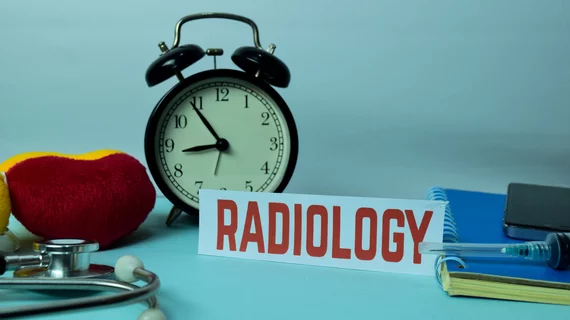60% of radiologists would accept lower pay for better work-life balance
About 60% of radiologists would accept lower pay in exchange for better work-life balance, according to new survey data from Medscape, published Friday.
The finding comes as some radiologists struggle meeting the demands of both family and their profession. About 39% of radiologists said they are conflicted as parents, due to work demands, while 33% are at least “somewhat” struggling to strike a balance.
“I feel like this is a perennial problem that boils down to a time issue” for doctors, Michael Ziffra, MD, an associate professor of psychiatry and behavioral sciences at Northwestern, told the website. “We want to spend more time with our children, but it’s also built into us to always go the extra mile to take care of the patient’s needs.”
Some 65% of radiologists surveyed said how they prioritize personal and family time is “very important.” Another 30% labeled this question as at least “somewhat important,” while 5% said “not very” and 1% “not at all.”
Many are finding time in their busy schedules for exercise, too. About 30% of radiologists exercise 2-3 times per week (the most popular answer), and 24% did so 4-5 times. Only 13% of radiologists said they do not exercise, 12% do so every day and 21% once per week.
Meanwhile, most radiologists surveyed do not place a priority on reducing screen time. About 63% are not trying to cut back on hours spent online, versus 37% who said they are. Most radiologists (55%) spend 2-4 hours per day on the web for personal use, compared to 27% who said fewer than 2 hours, and 18% who are on the internet 4-plus hours. Conversely, 46% spend fewer than 2 hours on the internet for professional use, 33% said 2-4 hours each day, and 21% said more than 4 hours.
Many also are finding time for vacation. About 45% of radiologists told Medscape they take more than 6 weeks away each year. That’s compared to 25% who take 3-4 weeks, and 13% who use 5-6. Only 5% of rads take less than a week of vacation per year.
The findings are derived from an online survey of 9,226 physicians, including about 275 radiologists, conducted between July and October. You can read the full report here:

